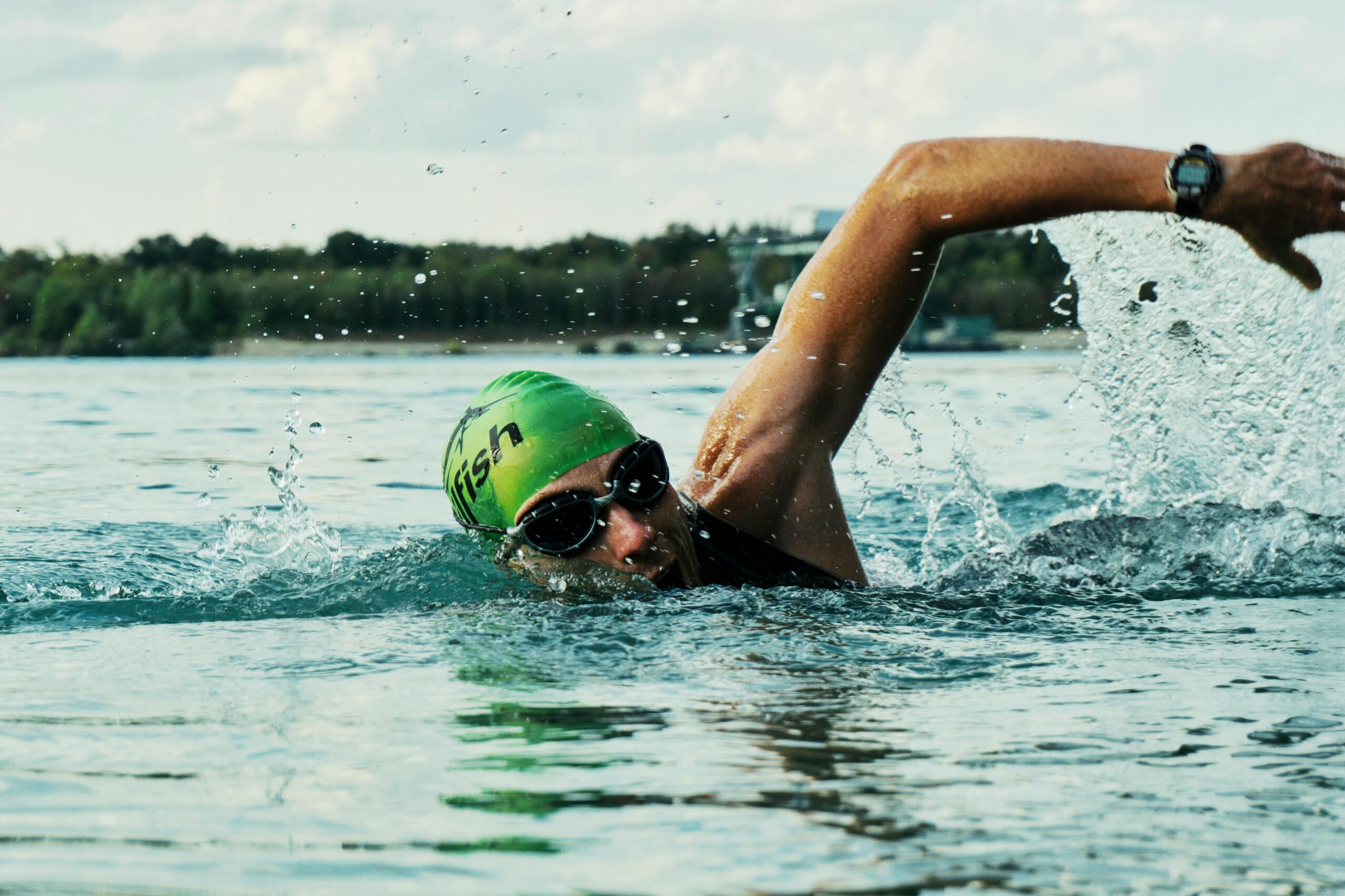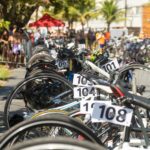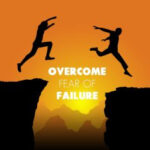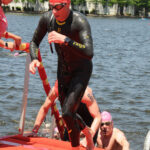You might think that I’m going through some sort of morbid phase in my writing because of my last article about Another Death in Our Ski Racing Family followed by this one. Certainly, bad timing, though I don’t think there is a good time for death. But writing helps me grieve and I hope my thoughts provide some clarity for others as well.
For those who haven’t heard the news, two triathletes died at the World Triathlon Championships in Torremolinos, Spain a few weeks ago, one during the swim and the other during the run. Most triathlon deaths occur during the swim (and usually in cold water) and Swim Induced Pulmonary Edema (SIPE) is considered a likely cause of death for this victim. I also work with triathletes who experience SIPE because there are often psychological (extreme negativity) and emotional (fear and panic) components to SIPE as well. There have been no causes of death reported for either triathlete.
I was at the World Championships competing in the Sprint distance in which these two triathletes died. In fact, I twice passed the fellow who collapsed on the run and was receiving CPR (he died on the scene of cardiac arrest).
When anyone dies in our triathlon family, it is a painful experience for everyone regardless of whether we knew the victim or not. Every time we train or compete in a triathlon, we are exposing ourselves to the same significant risks, so to have someone succumb to those risks is an emotional shock to our system and a rude wake-up call that causes us to confront the dark side of our sport. As my way of both grieving and coming to terms with the risks I put myself in when I train and compete, I try to understand those risks and gain some perspective to ease my worry.
To that end, I want to share some thoughts I have had about these two tragic deaths.
First, by most considerations, the water there was not cold (high 60s F). Though not rough, there were swells, but relatively tame by most standards (having raced Alcatraz 5 times, the water conditions didn’t raise one concern for me, despite being a mediocre swimmer at best).
Second, given the relatively infrequent, though consistent, occurrence of deaths in our sport, particularly in long-distance racing, it is very uncomfortable to have to admit that there are risks in our sport, though the greater risks involve getting hit by a car (of which I have first-hand experience when a driver collided with me the day before the 2021 Malibu triathlon, not to mention Kat Matthews and others). In fact, according to research, the fatality rate in triathlons is rather low, at about one in 76,000, 2/3s of which happen during the swim. Moreover, though heart attack was thought to be the most likely culprit, researchers have concluded that most of the deaths were due a condition called left ventricular hypertrophy LVH) which is known to trigger SIPE.
Look for Patterns
In our attempts to assuage our fears of any situation, we attempt to gain a sense of control over the risks and, as a result, those fears, by looking for patterns that might help us to avoid, or at least minimize, both. Of course, these attempts are largely illusory, though not ineffective, as research has shown that the perception of control is almost as powerful a comforter as actual control.
In looking for patterns, we humans are very good at, to quote introductory-level statistics books, “finding cause-effect relationships where none exist.” We are most likely to draw these often-times erroneous conclusions when two events happen in close proximity (called temporal contiguity, in psych-speak), as they did in the Sprint event at the World Championships. It’s easy to draw such a causal connection because we all ask ourselves, “What are the chances of two deaths in one race?” and “If it can happen to two triathletes in one race, what are the chances of it happening to me?” Actually, infinitesimally low. Again drawing on statistics, the Law of Large Numbers wouldn’t find these two deaths statistically anomalous at all because two independent events are likely to occur close together if the given scenarios occurred millions of times. Just like flipping coins, in which you might get five heads in a row, but as we all know, the chances of getting a heads or tails in any one flip is 50/50.
S&%# Happens
One of my most-commonly-used sayings in triathlon (and life) is: “S&%# happens!” I usually use this adage to explain small, yet irritating occurrences in triathlon, such as flat tires, losing a water bottle on the bike, or, as happened to me in running through T2 at Worlds, a gusto of wind caused my bike to suddenly change course (I was guiding it with one hand on the saddle) resulting in a major faceplant over said bike (I was okay, with the greatest consequence being the loss of a few seconds). But, sadly, my “S&%# happens” adage also applies to life events with far more dire and even catastrophic consequences.
Random Chances
I am going to suggest that these two unfortunate deaths, and most that occur in our sport are just the random occurrences of a high-risk sport caused by pre-existing conditions (such as LVH). This explanation may give the impression of precarity and vulnerability given the lack of control we have over these circumstances. At the same time, there is some comfort in knowing that, rather than something inherent in our participation, most of the deaths that occur in triathlon can be placed under the category of “s&%# happens” which, as I mentioned above, is highly statistically unlikely to happen to any one of us.
Certainly, World Triathlon, Ironman, Challenge, and PTO, as well as national federations and local race directors around the world, should continue to look for ways to reduce the risks of what happened in Torremolinos. Additionally, every triathlete must conduct a risk/reward analysis of their participation and decide whether training for and competing in triathlon is worth the risk.
We All Make a Choice
As is evidenced by the popularity of our sport, and drawing on my own insatiable passion for triathlon, as well as my understanding of the human psyche and statistical probabilities, I’m going to continue to experience the meaning, satisfaction, and joy that triathlon provides me, including the physical fitness, mental challenges, opportunities to push my limits, and, of course, the amazing community, while doing everything I can to keep the risks to a minimum. Because to just sit on the couch and watch life go by just isn’t an option.
My heartfelt wishes go out to the families and friends of the two triathletes who, sadly, died doing something they loved.
And I promise that my next article will be a bit more uplifting.







